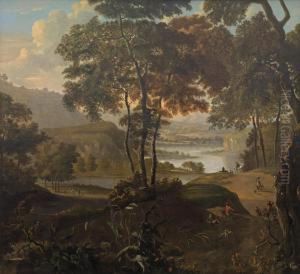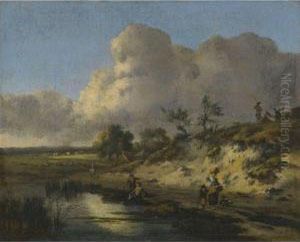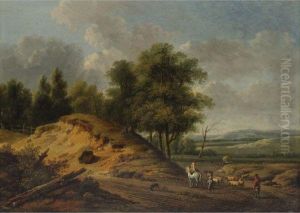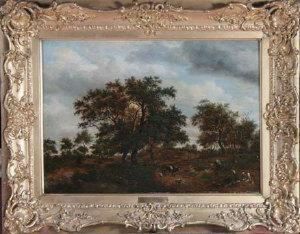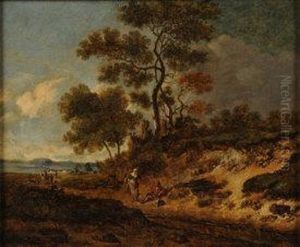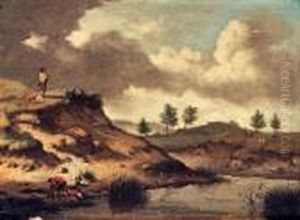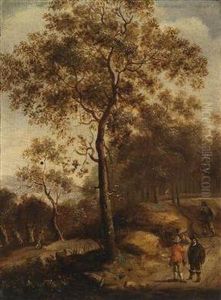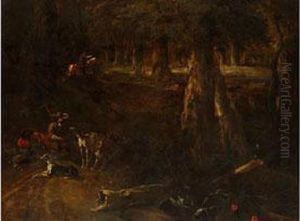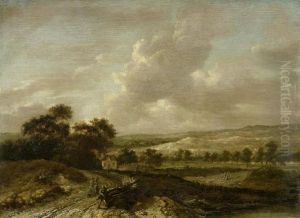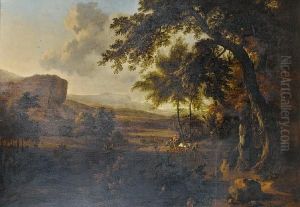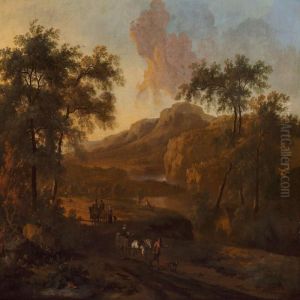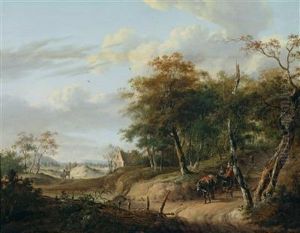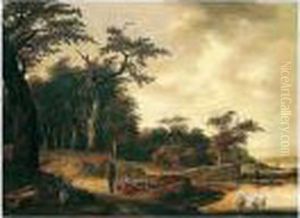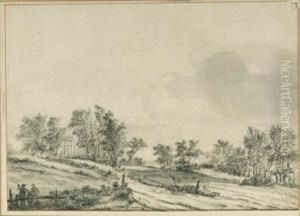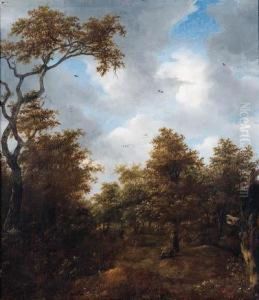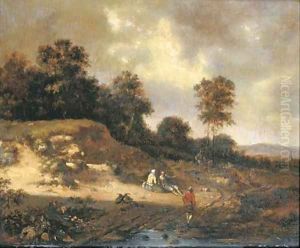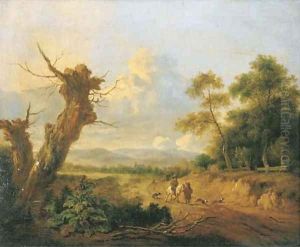Jan Wijnants Paintings
Jan Wijnants was a Dutch painter known for his landscape paintings and is considered part of the Dutch Golden Age of painting. He was born in Haarlem in 1632 and spent most of his career there, although there is some evidence that suggests he may have traveled to Amsterdam later in his life. Wijnants' early work showed the influence of fellow Dutch painter Pieter de Molijn, but he soon developed his own style.
Wijnants was particularly skilled at depicting the sandy dunes of the Dutch landscape, which became a hallmark of his work. His paintings often featured delicate and detailed foliage and were noted for their realistic portrayal of light and shadow. He also occasionally included figures in his landscapes, usually as secondary elements to the overall composition. These figures were often painted by other artists, such as Johannes Lingelbach, Adriaen van de Velde, or Philips Wouwerman, with whom he collaborated.
The artist's work evolved over time, and he began to include more wooded scenes, still adhering to his keen eye for naturalistic detail and light. Wijnants' influence was felt among his contemporaries and later generations of landscape painters. His use of color and ability to depict the textures of the natural world continued to be admired and studied by artists well after his death.
Jan Wijnants died in Amsterdam in 1684. Today, his paintings can be found in various museums and collections around the world, serving as an enduring testament to his contribution to the Dutch tradition of landscape painting. He remains a respected figure in the history of art, particularly for those with an interest in the development of landscape painting in Europe.
